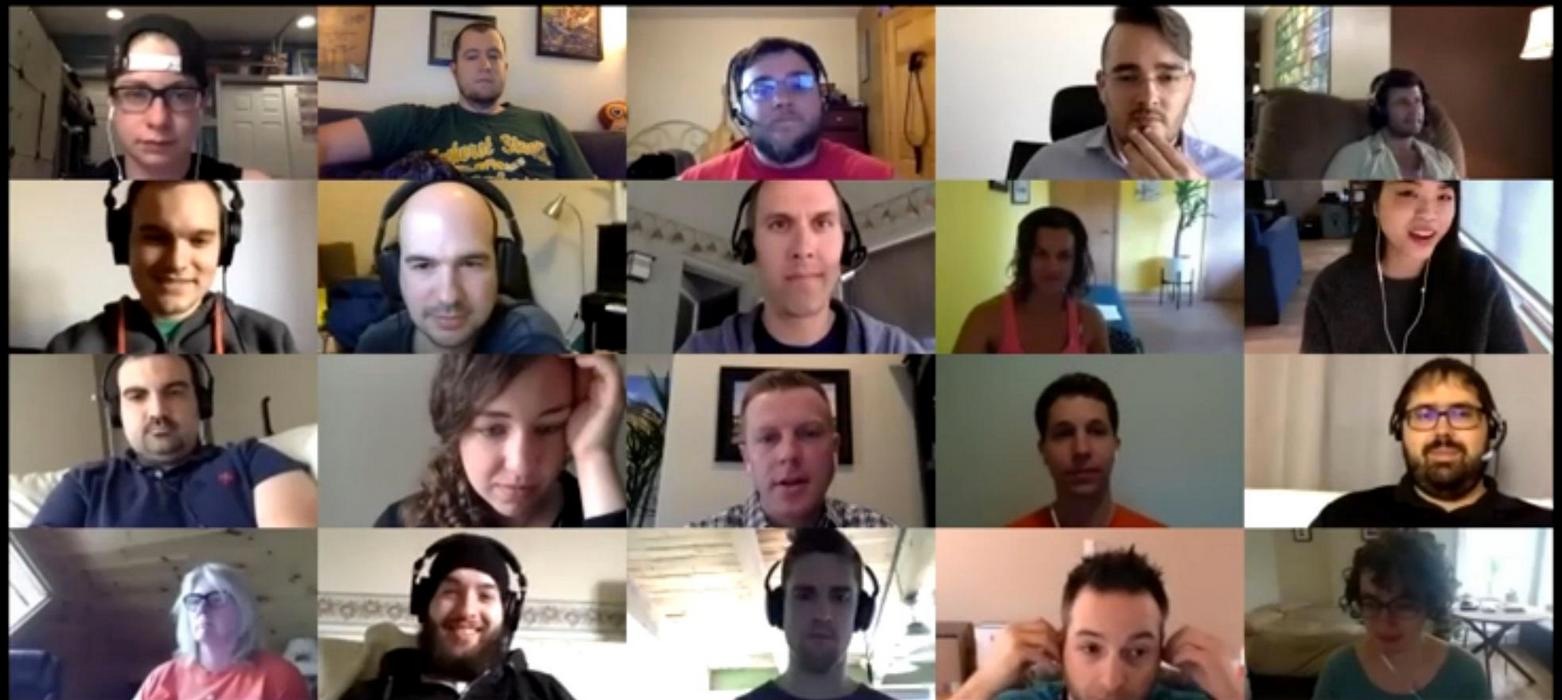04Growing your remote team: how to onboard new members and set expectations
The simplest way of thinking about effective and successful remote employee onboarding comes down to two main things—firstly, creating a welcome, inclusive and open environment, and secondly, an effective start to individual work.
The first important step is to generally explain how things work in your team culture wise to your new employee. This can include:
- the main internal team values (tolerance, inclusivity, being supportive to your team members);
- key factors to efficient long-distance communication both on a personal and professional level (how the chat systems work, how you keep transparency in your work, reporting on your progress);
- your approach to physical meetups or team retreats;
- vacation policy;
- etc.
The initial general run-down is especially important if the person hasn’t worked in a remote environment at all before, but shouldn’t be neglected with those with prior experience, either—guidelines and practices for efficient remote work can vary a ton in even very similar companies.
A general spoken walk-through of your remote work culture is a good start, but new hires tend to be anxious—for obvious reasons—and will probably want to revisit these things throughout their work—at least in the beginning, while still getting acquainted with the environment.

You don’t necessarily have to have an internal, written down code of conduct or communication tips, but the general rule of thumb is that stuff like this would be nice to have readily available as a document for future reference. One of the best companies to mention when talking about clear internal guidelines is Zapier—for example, here’s their code of conduct, that is used within the team as well as shared publicly.
Written down stuff like this is useful for everyone in the company (especially if you keep improving them together as a team), but particularly for new employees who aren’t familiar with the people, culture and vibe in your company yet, and will likely help put them at ease. So, if you don’t have an internal playbook for your team yet, draft one, and make it available to everyone in the team for brainstorming.
Don't think of this as a rigid, bureaucracy-flavored process write-up—consider it a way to strengthen your team culture through constantly collaborating on the ideas of how and why you work, and how you can make each other feel secure and included.
Even if you’ve spoken to your new hire via video calls many times during the interviewing process, it’s important to do it again after you’ve closed the deal. Interviewing is stressful, and connecting to their potential boss or new coworker on a personal level isn’t the first thing on most people’s minds during the still unclear period of interviewing.
To be totally honest, it’s much more likely that they’ve been so preoccupied with making a good impression that they might not even remember your face. Pressure to perform well does funny things to people and their memory.
In a remote team, it’s essential for your new employee to connect as many names to faces to voices as possible, as soon as possible. If you have enough time and resources, consider bringing your new remote employee to your headquarters (if you have one), or arrange a whole team meet up soon after them joining.

Actually hanging out with a lot of the team takes away many of the unknown factors, and will put the new employee as well as existing ones at ease about their joint future.
Of course, an immediate team meeting right after hiring is an ideal onboarding scenario, but if you’re hiring a lot, also pretty unrealistic—few actively hiring companies have sufficient funds to throw a team get-together every time they onboard someone. Luckily it’s also not absolutely necessary, as we live in the magical era of video calling.
Video calling is the next best thing after an actual meeting—it allows new people to get some virtual face-to-face time, ask the questions they need to ask, and start building a stronger personal relationship—something that massively benefits from actually seeing someone’s body language and making eye contact—even if it is on a screen.
Besides making sure that your new hire makes a personal connection to the people they’ll be working with closely, it’s also nice to encourage them to chat to team members who aren’t directly connected with their position. Zapier, for example, uses a pair buddy system to encourage connections between employees of all kinds:

We use this to chat about life, work or whatever random thing seems interesting. Sometimes cool new product features come out of these, other times it's just good fun. Regardless, it helps everyone better know their teammates.
Same goes for Toggl Track:

Besides pair buddies and lots of calls, there are a few things you can do on chat with the whole team that helps the new employee get to know the team and vice versa:

Besides arranging stuff like pair buddies yourself, make sure to encourage your existing employees to reach out to the new hire on their own, too. This way you can have smoother introductions while also making sure that the people have enough rapport to build on later in the future.
Make sure you arrange all the necessary work-related, mundane logistics as soon as possible after making the hiring decision, so your new team member can start discovering and testing the working waters whenever they feel the time is right.
This includes, (but might not be limited to):
- Creating a personal company email address;
- giving them access to any necessary company accounts (social media, Wordpress, etc);
- adding them to any relevant internal collaboration tools (for example Asana, Slack, Github, etc).
Also, again with the internal documents—it’s handy to have a readily available list of all the tools and channels that the team uses internally and externally. It serves as an excellent reference point in the first (confusing) work weeks for new hires, a good resource for already existing employees, and creates a reassuring sense of structure and transparency in an otherwise distributed environment.
After listing the tools you use to make everyday work productive, it’s also essential to go through it with your new team member and see whether they have prior experience with all of it, or if there’s a tool, resource or community they’re not familiar with yet.
If that’s the case, it’s always more efficient to “pair them up” with an existing team member who knows the topic well and having them show them the ropes, rather than having them try and figure it out on their own. Support and guidance is key.
So, now you’ve made sure that all the internal work processes and guidelines for the entire team are readily available and open for suggestions and collaboration, and you’ve encouraged open and regular communication between the new employee and existing team members. Well done! It’s time to get started with making sure that your new team member’s individual work process gets a good start.
Even if you made the tasks and responsibilities for the new position very clear even before you made the hire, it’s still important to be extremely organized and detailed with your new employee in the beginning.

Explain again what you expect, what their direct responsibilities are, and most importantly—which steps they should start out with. In a traditional work environment, new employees usually receive at least some form of on-site, in-person training, but this isn’t really an option with remote workers most of the time—so make sure that all of the information they need is readily available.
A good way to do this is with a shared document between you and them, that they can freely comment on, edit and contribute to. Another essential is creating a task list with precise action points and due dates—being a remote team, you probably already use a task management system such as Trello or Asana—so make sure your employee is added into all of the relevant boards, and encourage them to create their own if need be.
Also, if your team practices regular one on one calls or updates, it makes sense to schedule them a little more often with our new hire than your existing employees—or at least check in via a message more than you usually would in the first couple of weeks, to make sure they’re not struggling with anything.

Employee onboarding, like many other processes in teams both traditional and remote, should be constantly changing and collaboratively improved on. For each new step you add to your onboarding, you should also keep an eye on its effect and results. Find out what works best by evaluating how new employees as well as old ones react to the process.
Besides your own external evaluation, the best information comes straight from the source. After new remote workers have been at it for the while (say, a few weeks, and then again after a month), sit them down and ask them how they feel about their onboarding. Some things to discuss would be, for example:
- Did we tell you enough about our team values and communication guidelines to make you feel comfortable and confident?
- Were we clear enough about the tools and resources we use for efficient day-to-day work?
- Did you feel like you had enough support from your team members during the onboarding period?
- Was there any point where you felt left out or uncomfortable?
- What could we improve about the onboarding process?
Be open, listen, and don’t judge or get defensive. Honest feedback is the key to evaluating and eventually improving your onboarding process.

Having a healthy balance of advanced interpersonal relationships as well as confidence and sense of support in your work—even if just starting out—means your new remote employees will feel motivated, included, supported and happy. And that’s what we all want!
Continue reading
- 01 Why go remote - the pros and cons of becoming part of a distributed team.
- 02 Building distributed teams: everything you need to know
- 03 Hiring remote talent: How to set up a successful remote hiring pipeline
- 04 Growing your remote team: how to onboard new members and set expectations
- 05 How to make remote teams work: Culture is crucial
- 06 How to lead a great remote team: the importance of letting go